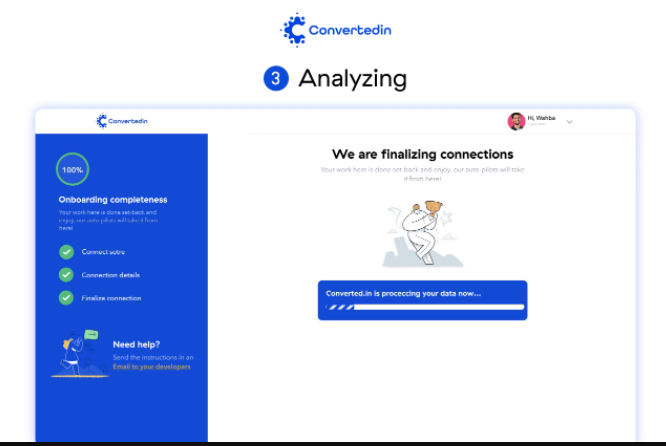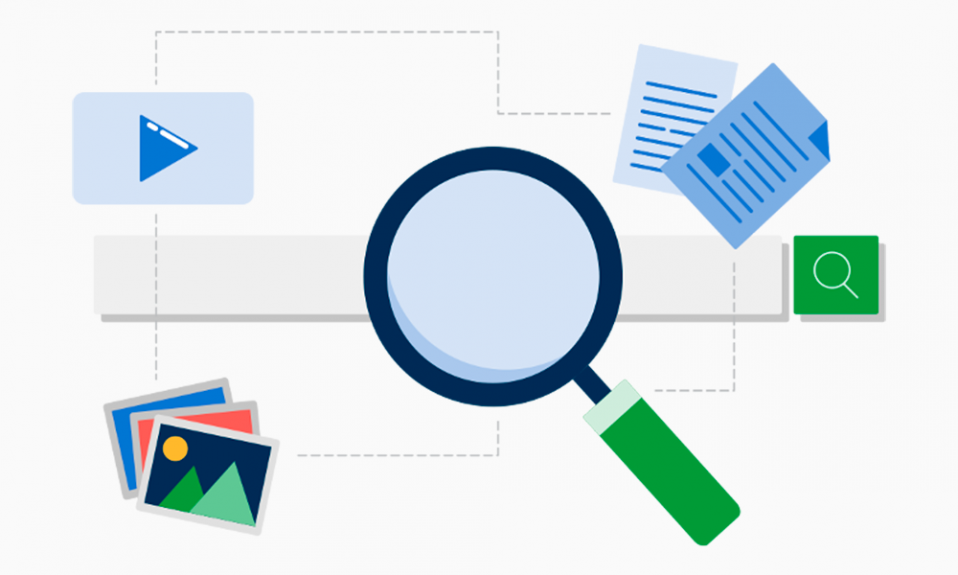8 Ways To Determine Ecommerce Target Audience For Your Store
When it comes to eCommerce, there’s no such thing as “one size fits all.” Your target audience is unique, and your products and services should be too.
The first step in building a successful online store is figuring out your ideal customer and how you can reach them through effective marketing strategies.
In this article, we’ll cover how to define and target your ideal customer so that you can attract them with the right products and marketing strategies.
In this article, we're going to cover:
- What Is Ecommerce's Target Audience?
- Why Is It Important To Have a Target Audience For your Store?
- 8 Ways To Determine The Target Audience For Your E-Commerce Store:
- 1- Analyze Customer Demographics and Psychographics
- 2- Refer to Your Competition
- 3- Use Data From Google Analytics
- 4- Conduct surveys or focus groups
- 5- Use Social Media to Your Advantage
- 6- Use Consumer Research Tools
- 7- Create Personas
- 8- Leverage AI and Automation Tools
What Is Ecommerce's Target Audience?
A target audience is the specific group of people you want to sell your product or service to. It can be as simple as "women aged 25-40 who like to travel," or it can be more complex. For example, "people are interested in business opportunities but don't have much money to invest.
The more specific your target audience is, the better you can tailor your products and marketing strategies to appeal to them. The goal is to create a persona for each audience segment that represents their needs, wants, and desires. This will help you understand what products they would be interested in purchasing from an online store like yours.
When trying to target your ideal customer, it’s important to remember that you can’t appeal to everyone. You must find the right balance between appealing to a large group of people and focusing on just those who will buy from you.
Why Is It Important To Have a Target Audience For an Online Store?
The most important reason is to ensure that your products and marketing strategies are targeted at the right people. This will help you reach more customers, increase sales and create a loyal customer base.
It also allows you to tailor your online store based on your audience’s needs. This can be done by changing design elements or adding new features that cater to their wants and desires.
8 Ways To Determine The Target Audience For Your E-Commerce Store
As you think about your target audience, here are 8 ways to help you determine who they are:
1- Analyze Customer Demographics and Psychographics
When first developing your target audience, it's essential to consider the customer demographics and psychographics. Demographic data refers to age, gender, race, and ethnicity. Psychographic data relates to lifestyle choices regarding where people live, what they do for fun, and how technology plays a role in their lives.
Demographics are easy to understand and provide a general overview of your audience. Psychographics go deeper and allow you to reach out to specific groups of people with similar interests. For example: If you're selling outdoor gear to millennials, it's essential to know that they tend to be active users of technology.
They're also influenced by social media and are interested in adventure travel. By targeting ads to millennials who are active on social media and enjoy adventure travel, you can reach a more specific audience that is likely to buy from you.
Discover The Key Benefits Of Customer Segmentation for eCommerce
2- Refer to Your Competition
Analyzing competitor stores and their audiences allows you to understand better what your audience is looking for. You can view the demographics of a competitor's store and determine if they're targeting similar customers as you are.
For example, if your competitors target a specific demographic with their advertising campaigns, they have likely succeeded with that particular strategy. You can also check competitors' keywords that attracted customers to their stores.
By keeping up with the trends in your industry, you can stay ahead of the curve when it comes to marketing strategies.
3- Use Data From Google Analytics
Using Google Analytics to see what kind of people visit your site is a great way to determine what your target audience looks like. With Google Analytics, you can see what types of pages they visit most often and how long they stay on those pages. You will also see which keywords people use when searching for your products or services online.
Apart from learning more about your target audience, this data can help you figure out how to optimize your website. Hence, it appeals more specifically to the people likely to use it.
In addition, the information from google analytics can help you create more effective marketing strategies. For example, if you find that most of your visitors are from one specific country or region, you'll know which areas to target with your ads.
4- Conduct surveys or focus groups
One of the best ways to identify your target audience is to speak with them directly. Ask your customers what they want and need, or conduct a survey for potential customers to determine how they shop online, what kinds of products they're interested in buying and why.
You can also conduct focus groups, where you bring people together in person to discuss their needs and wants. This is an excellent way to get first-hand insight into what people want from your e-commerce store.
Focus groups may be able to help identify some potential problems with your current offerings that need addressing. You can also test new products, services or marketing campaigns before launching them.
5- Use Social Media to Your Advantage
Social media is an excellent place to start when trying to determine your target audience. Social media can also help you know your audience's interests and hobbies.
Start by asking people questions about themselves or what they like to do. This can help you determine what products they’d be interested in purchasing.
Another method to gain insight is to look at your competitors and see what types of people they're targeting. Follow them on social media sites like Facebook and Twitter, and interact with their followers. This will help you figure out who they are appealing to and what type of content they are posting that resonates with those groups.
6- Use Consumer Research Tools
Consumer research tools can be used to analyze consumer shopping behaviors and preferences. These tools determine which demographic or consumer group will most likely purchase your product or service.
The good news is that many tools are available for free or at a meager cost. Some of the most commonly used consumer research tools are:
- Google Trends – This can show you how often a specific search term is used, where it's used, and what kind of content people are looking for related to that term.
- Facebook’s Audience Insights – This tool can help you find out more about your audience’s demographics, interests and behaviors on Facebook.
- Google’s Keyword Planner – This free keyword research tool helps you find the best search terms to target when creating content.
- Pinterest’s Business Insights – This shows you who pinners are, what they like and don’t like, and how often they interact with their favorite pins.
The advantage of using consumer research tools is that they give you access to the actual data of what consumers want and how they behave. This information can help you make more informed decisions about your marketing campaigns.
7- Create Personas
Personas help you visualize the segments of consumers that make up your audience. This is especially helpful if your product appeals to many people.
Let’s say you sell a type of protein powder. In this case, the audience is anyone who wants to build muscle and lose weight. You can break down your audience into three main groups:
- Young people who want to stay in shape (e.g., college students)
- Older people who have some extra pounds they want to lose (e.g., retirees)
- Active individuals who work out regularly but still want to bulk up (e.g., fitness trainers).
To create personas, you need to write down a few key characteristics of each segment of your audience. You can do this by looking at the data you have collected and then describing a typical member of each group. For example
Persona #1: A male in his mid-20s who works in sales at a small company. He is single but has an active social life and loves to party on weekends. He likes to hang out with friends, play video games and go to concerts.
Persona #2: A female in her mid-30s married with two kids. She works as a teacher at a local school and likes to spend her free time reading, gardening, and cooking for her family.
The key is to ensure that each persona has enough detail to feel like a natural person rather than just another number on your spreadsheet.
8- Leverage AI and Automation Tools

Automation tools can help you generate insights into your audience and what they like. Many of these tools leverage AI to create detailed personas that can be used to shape their messaging, content, and marketing efforts.
Some AI tools will also take it a step further to help you create a targeted ad across many platforms with the targeted audience data they have collected. For Instance, ConvertedIn has templates for automating ads aimed at the right customers, gathering shopper insights through AI, and creating personas based on that data. It also helps automate ads across many marketing channels like Facebook and google.
This is a great way to streamline your marketing efforts, but it can also be very effective. You’ll find that you get better results with less effort when you automate some marketing tasks. This allows you more time to focus on other areas of your business or create new content for your audience.
Final Thought: Continuously Revise
As you continue to interact with your target audiences, you’ll better understand the people they are and what they want. This will allow you to create more accurate personas based on the most up-to-date information. Your marketing strategies will also improve as time goes on because they will be more relevant to your audience.

